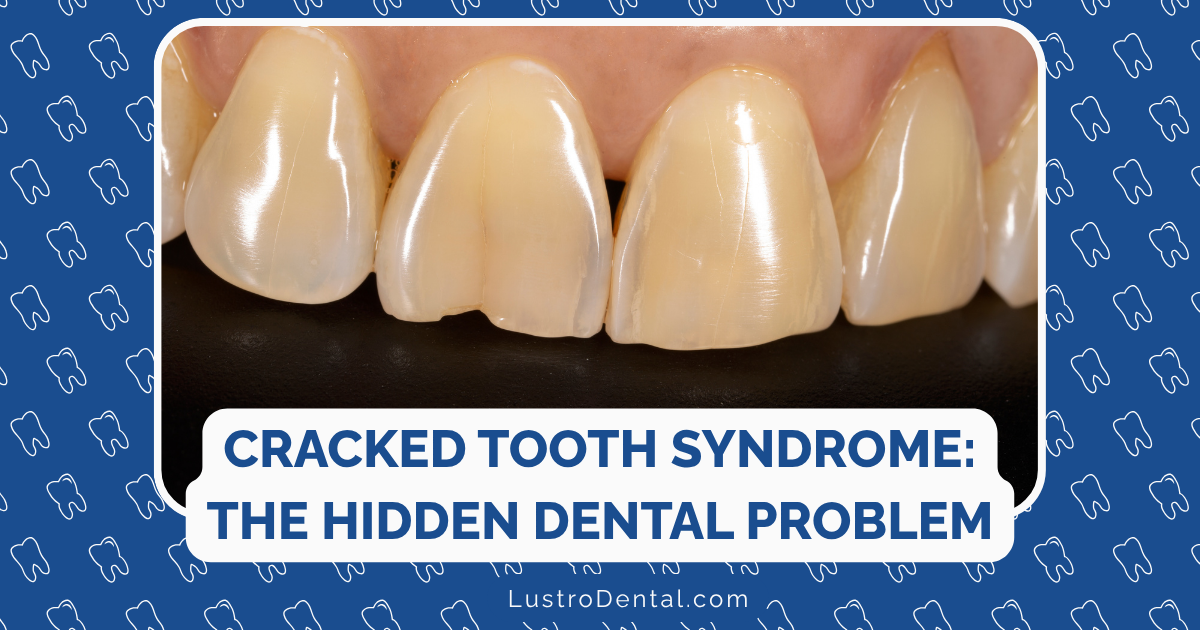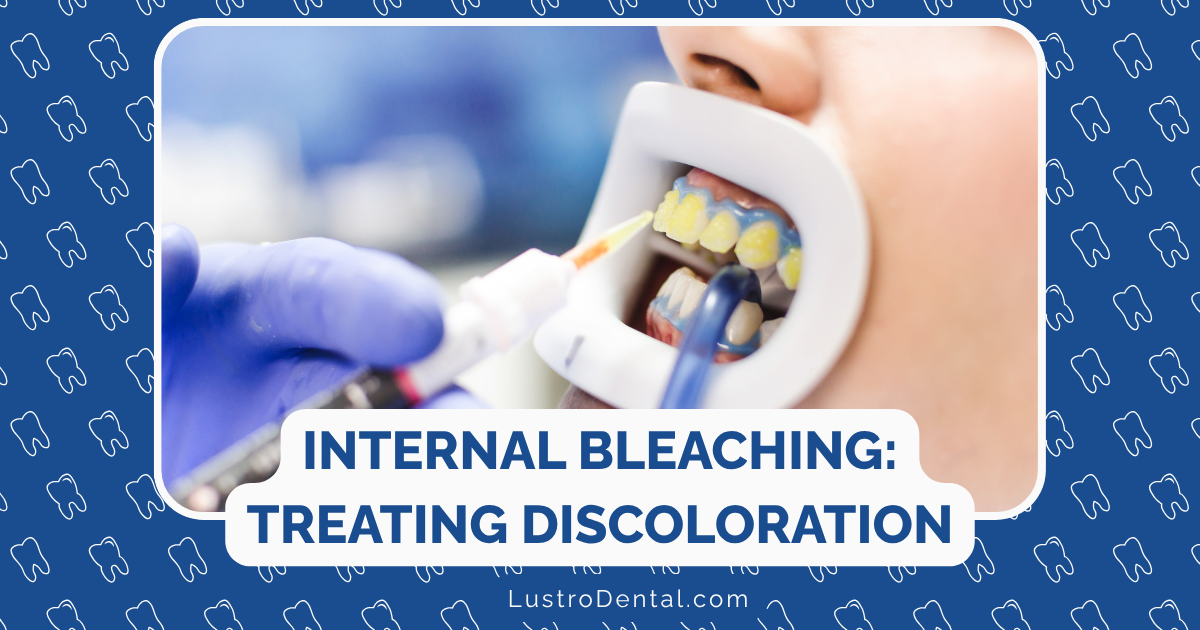The Mystery of Cracked Tooth Syndrome: Why It’s Hard to Diagnose

Have you ever experienced a sharp, shooting pain when biting down on food, only to have it disappear moments later? Or perhaps you’ve noticed an odd sensitivity to hot or cold that comes and goes without any obvious pattern? If so, you might be experiencing what dentists call “cracked tooth syndrome” (CTS)—one of the most perplexing and challenging conditions to diagnose in modern dentistry.
As someone who’s guided many patients through this frustrating journey, I’ve seen firsthand how cracked tooth syndrome can turn into a dental detective story, sometimes spanning months before a definitive diagnosis is reached. Let’s unravel this mystery together and understand why this condition is so notoriously difficult to pin down.
What Exactly Is Cracked Tooth Syndrome?
First introduced by Cameron in 1964, cracked tooth syndrome refers to an incomplete fracture of a vital tooth that often extends into the dentin and occasionally into the pulp. These aren’t the obvious, visible cracks that you might spot in a mirror—instead, they’re often microscopic fractures that hide beneath the surface, evading detection through conventional methods.
According to the American Association of Endodontists, cracked teeth are now the third leading cause of tooth loss, behind only cavities and gum disease. Yet despite their prevalence, they remain among the most challenging dental conditions to diagnose accurately.
The Elusive Nature of Symptoms
One of the primary reasons cracked tooth syndrome is so difficult to diagnose is the inconsistent and often confusing nature of its symptoms.
The Now-You-Feel-It, Now-You-Don’t Pain
Dr. Sarah Johnson, endodontist at University Dental Institute, explains: “The hallmark of cracked tooth syndrome is inconsistent pain. Patients often report that it hurts only when they bite in a certain way or on particular foods. This intermittent nature makes it incredibly difficult for both patients and dentists to locate the exact source.”
Typical symptoms include:
- Sharp pain when biting or releasing bite pressure (especially on hard or small foods)
- Temperature sensitivity that comes and goes (particularly to cold)
- Discomfort when eating sweet or acidic foods
- Pain that’s difficult to localize to a specific tooth
- Symptoms that may disappear for weeks or months before returning
This inconsistency often leads patients on a merry-go-round of dental visits, with the pain mysteriously vanishing just as they sit in the dental chair, only to return later when they’re at home or work.
Why Can’t You Just Feel the Pain When I Need You To?
Many patients express frustration that their tooth “performs” differently in the dental office than it does in real life. This isn’t your imagination—it’s actually a defining characteristic of the condition.
“I had one patient who visited three different dentists over eight months before we finally identified her cracked tooth,” shares Dr. Michael Chen of Advanced Dental Care. “Each time she had an appointment, her symptoms would mysteriously subside, making diagnosis nearly impossible.”
The Invisible Enemy: Why Cracks Are Hard to See
The physical nature of tooth cracks presents another significant challenge in diagnosis.
Hiding in Plain Sight
Tooth cracks are often:
- Microscopic in width (thinner than a human hair)
- Located below the gumline where they can’t be directly observed
- Positioned in areas difficult to visualize (like the sides or roots of teeth)
- Running in a mesiodistal direction (front to back), making them invisible on standard X-rays
- Hidden beneath existing fillings or restorations
The X-ray Limitation
One might assume that modern dental X-rays would easily reveal these cracks, but that’s rarely the case. Standard dental radiographs are excellent for detecting cavities, bone loss, and other conditions, but they have a significant limitation when it comes to cracks.
For a crack to be visible on an X-ray, it must be perfectly aligned with the X-ray beam—something that rarely happens with dental fractures. In fact, research indicates that even with digital radiography, most cracks remain completely invisible unless they’ve already separated enough to create distinct fragments.
As the Journal of Endodontics notes, “Radiographs are rarely effective in detecting cracks due to their tendency to propagate in a mesiodistal direction.” This means that even with perfect X-rays, most cracks will remain hidden from view.
The Diagnostic Challenge: Tools and Techniques
Given these difficulties, dentists must rely on a combination of approaches to diagnose cracked tooth syndrome.
The Detective’s Toolkit
Modern diagnosis typically involves:
- Detailed dental history: Patterns of pain and sensitivity provide crucial clues
- Visual examination: Using magnification (dental microscopes can magnify up to 25x)
- Bite tests: Special tools like the Tooth Slooth® that isolate pressure on specific cusps
- Transillumination: Shining a fiber optic light through the tooth to reveal cracks
- Staining techniques: Dyes like methylene blue that can highlight fracture lines
- Exploratory preparation: Sometimes removing existing fillings to check underneath
- Advanced imaging: In some cases, cone-beam computed tomography (CBCT)
Even with all these tools, diagnosis often remains challenging. Dr. Lisa Wong, Director of Endodontic Research Institute, observes: “Even with our most advanced technology, we sometimes can’t confirm a crack until we’ve actually begun treatment. It’s one of the most humbling aspects of modern dentistry.”
The Limitations of Technology
While dental technology continues to advance, each diagnostic method has limitations:
- Dental microscopes: Excellent for visible surfaces but can’t see through enamel or beneath gums
- Bite tests: May not reproduce the exact conditions that cause pain in daily life
- Dye staining: Requires time to penetrate and may not reach deep cracks
- CBCT imaging: While three-dimensional, typically has a resolution limit of about 75-100 microns, while cracks can be much narrower
A 2022 study in the Journal of Dental Sciences found that even with the most advanced CBCT technology, cracks narrower than 100 microns (about the width of a human hair) often remain undetectable.
The Psychological Impact on Patients
Beyond the physical challenges, cracked tooth syndrome takes a psychological toll on many patients.
When No One Believes Your Pain
“One of the most distressing aspects for patients is the fear that they won’t be taken seriously,” notes Dr. Johnson. “When multiple dental visits yield no clear diagnosis, patients sometimes begin to doubt themselves or worry that their provider thinks they’re exaggerating.”
This experience can be particularly frustrating when:
- Pain is severe but intermittent
- Multiple dental professionals can’t identify the cause
- Symptoms persist for months without resolution
- Well-meaning friends or family suggest it might be “all in your head”
If you’re experiencing these feelings, know that you’re not alone—and you’re not imagining your symptoms. Cracked tooth syndrome is a well-documented condition that sometimes requires extraordinary persistence to diagnose properly.
Moving Forward: What to Do If You Suspect a Cracked Tooth
If you believe you might be experiencing symptoms of cracked tooth syndrome, here are some practical steps to take:
- Keep a detailed pain journal: Note when pain occurs, what triggers it, and how long it lasts
- Be specific with your dentist: Describe exactly what activities or foods cause discomfort
- Consider seeing a specialist: Endodontists have additional training and equipment for diagnosing cracked teeth
- Be patient but persistent: Don’t give up if the first examination doesn’t yield answers
- Ask about advanced diagnostic techniques: Inquire whether tools like CBCT imaging or dental microscopes might help
The Silver Lining: Treatment Options Are Improving
Despite the diagnostic challenges, there’s good news for patients with cracked tooth syndrome. Once identified, modern treatment options have excellent success rates, especially when cracks are caught early.
Treatment approaches include:
- Protective restorations: Crowns or onlays that hold the tooth together
- Targeted root canal therapy: For cracks extending into the pulp
- Advanced microsurgical techniques: In cases where traditional approaches aren’t sufficient
Dr. Chen emphasizes, “While diagnosis remains challenging, our treatment success rates continue to improve. The key is persistence in getting to an accurate diagnosis and intervening before the crack propagates further.”
Final Thoughts
Cracked tooth syndrome truly represents one of dentistry’s most intriguing mysteries—a condition that challenges even the most experienced practitioners and sophisticated technology. If you’re currently navigating this diagnostic journey, take heart in knowing that with persistence and the right dental team, most cases can eventually be identified and successfully treated.
Have you experienced the frustration of an elusive dental diagnosis? Share your story in the comments below—your experience might help others feeling the same uncertainty.
This article is meant for educational purposes only and should not replace professional dental advice. Always consult with your dentist about your specific symptoms and concerns.







